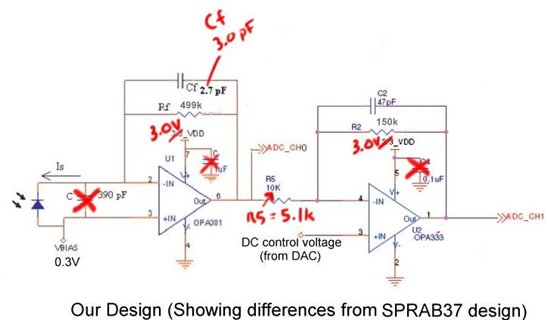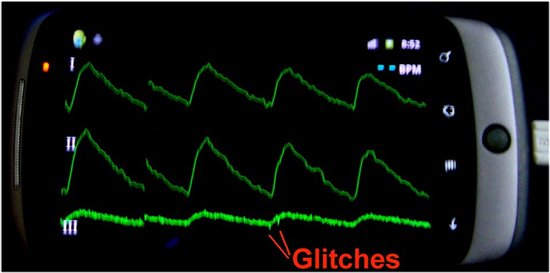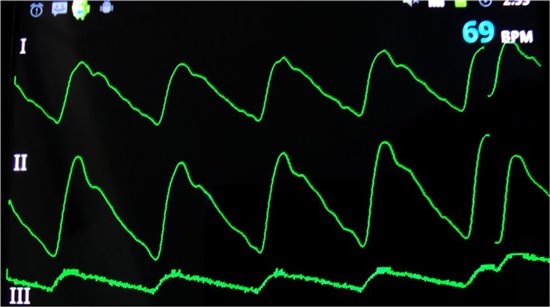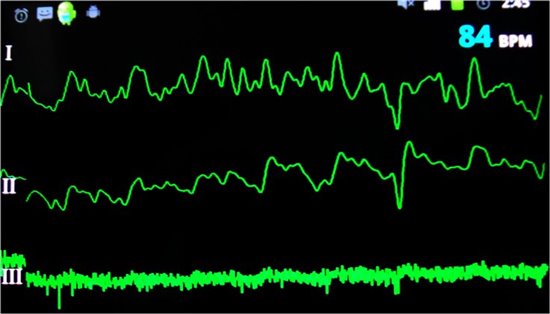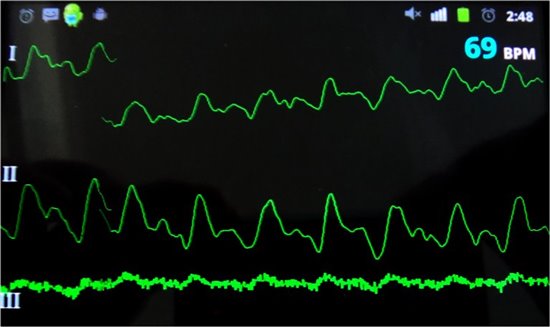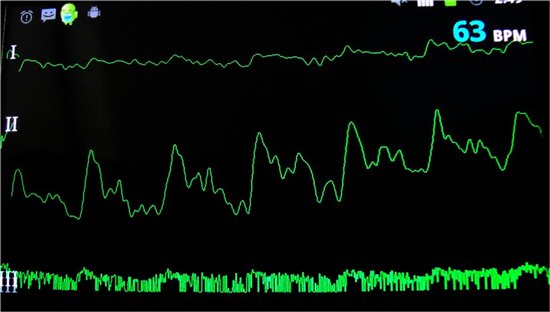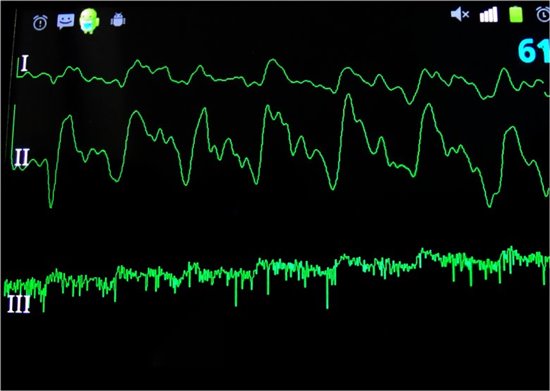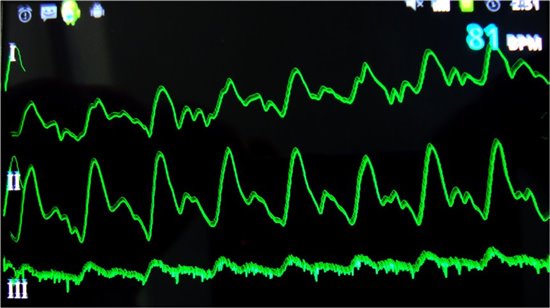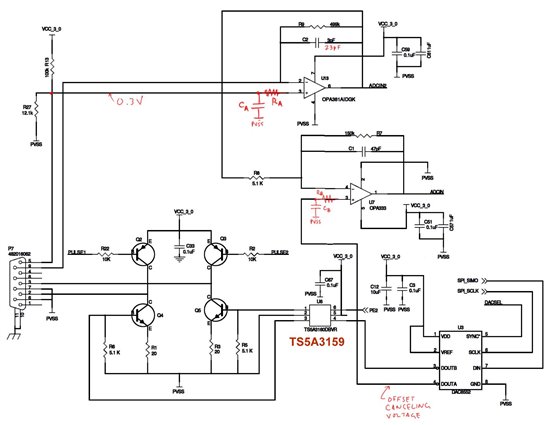Hi,
I'm using an OPA381 as the first stage of a pulse oximeter amplifier similar to the circuit in this app note SPRAB37 and shown below. Its output goes unstable as I increase LED brightness (which increases photodiode signal). I am showing this design first as it is ostensibly a known working design (our design is shown next):
This design was subsequently ported by TI to MSP430 with internal op amps and has two different revisions, finalized in this version: SLAA274B.
We moved from MSP430 design back to external op amps. Notably, key components were changed in the MSP430 design. We kept some of the changes made in the MSP430 design and arrived at our design below. Note the most differences from the original SPRAB37 design are highlighted in red:
We have been incrementally changing the gain in both stages (R2 and Rf) to try to get a stable signal that can read pulse oximeters for various skin types. Our basic problem is our 1st stage goes unstable as we increase LED brightness before we can get a good signal for darker skin.
Here is our background:
- We can now get a good pulse ox signal for light skin with good circulation.
- To do this we have iterated Rf and R2 feedback resistors and manually change the offset (DC control voltage) in the second stage and the LED intensity into the first stage photodiode.
- We also tried adding back the 390pF cap in the first stage input (no improvement).
- We dropped our gain in the second stage down (because we were clipping on 0 and 3.0V rails) from R2 = 150k to R2 = 38k.
- We had upped the gain in the first stage to Rf = 5.1M before we realized we had the wrong op amp (we found we had the OPA830 instead of OPA381 in the first stage...this has been fixed.)
- Now we have moved it back down to Rf = 1.7M. Although this works great for my very pink translucent fingers, it does not work well for the browner members of the team.
- The output of the first stage begins to oscillate as I increase the diode brightness before I can get a good signal. I am moving from 1.7M to 1.3M at this point.
What I really need is a transimpedance op amp expert to comment on this to tell me how to calculate or choose my Rf Cf and R2 and whether we need any cap on the input. I know that transimpedance amps are tricky, but I thought working with two previous designs would narrow my design down a bit. It has, but I have yet to arrive at an optimum solution. Currently R2 = 38k and Rf = 1.3M.
One other thing: Thanks in advance for your help!!!!!
Kind regards,
Kevin Kreger



